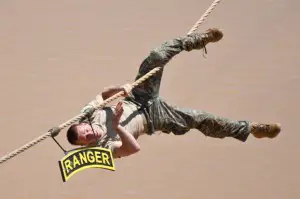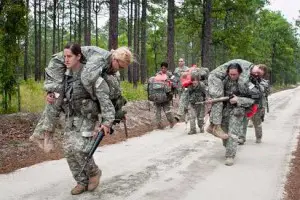Monthly Archives: November 2014

Letitia Davis, 36, before she was burned to death for being in the wrong place at the wrong time, by a man the justice system never took seriously.
Police and firefighters, called by a good Samaritan, found a woman in Wichita last monday doing an impression of the cartoon character, the Human Torch. But she didn’t light herself up — an unknown suspect, about whom all the cops know is that he’s black and male, did.
Wichita police say a woman was sexually assaulted, hit on the head, and set on fire Monday night in Fairmount Park.
According to police, the woman was on the ground, almost in a crawl, barely moving, and naked.
The flames from the fire were about 2 to 4 feet high. [Neighbor Johnye] McPherson stayed with the woman until firefighters arrived. [It was Ms. McPherson who called 911, saving the burned woman’s life].According to Wichita police Captain Troy Livingston, the woman suffered burns on 55 percent of her body and is currently in critical condition but has slightly improved.
Police are still trying to figure out if this was random or if the woman was targeted. Either way, Livingston called it a “disgusting crime.”via Police: Woman Sexually Assaulted, Set on Fire in Park « CBS St. Louis.
Had this monster used a firearm in his crime, well-meaning people (and other, less-well-meaning ones) would be calling for disarming the multitudes who didn’t do it, as if they were collectively responsible for his crime.
The problem isn’t lighters, of course, and it’s not guns. It’s monsters.
When we put it that way, what’s the big deal? Everyone knows how best to handle monsters.
UPDATE
Despite the best efforts of Ms McPherson and Wichita police and firefighters, and those of the doctors and staff of Via Christi Hospital St Frabcis, the victim in the case passed away Saturday.
She was 36-year-old Letitia Davis, originally from Topeka.
Cornell McNeal is charged with Capital Murder, Rape, and Arson in her death. It appears to have been a random attack. Initially, “the community” seemed to hold to its stop-snitching ethos, but when the reward was raised to $2,500, the phones of The Man began to ring.
McNeal has a long criminal history, with numerous examples of violence towards women. Police are examining the possibility that he is connected to a string of rapes at nearby Wichita State University.
Ray’s Recruiting Rangerettes; Lower Standards, Commissars, to Guarantee Graduation

This rope traverse in Ranger School is a one-time deal, not part of the PT test. One example of the physical demands on the Ranger candidate. The ladies won’t be doing this.
Army Chief of Staff Raymond Odierno has been having his minions actively recruiting Ranger rats for the first coed Ranger class. The Army has learned from the Marines’ experience with their officer and enlisted infantry schools, and he’s not even going to attempt to have the Rangerettes meet the existing standards.
He’s also emplaced a Corps of Commissars — female officer and NCO “observers and advisers” whose mission will be to ensure that the sisters make it through. Some 31 women were selected out of “more than three dozen” who applied. The Corps of Commissars selectees were given a one-week micro-Ranger-school, according to Military.com (hat tip, The Captain’s Journal):
…so they can work alongside male instructors and help observe the female students selected for the first-ever co-ed class, known as the Ranger Course Assessment, tentatively scheduled for this spring.
The Military.com article has a few more prize quotes. We couldn’t make this crap up:
“Their performance and professionalism over the course of the week was extraordinary,” Maj. Gen. Scott Miller, commanding general of the Maneuver Center of Excellence, said of the women, according to a release posted on Fort Benning’s Facebook page. “This group did very well for what was a very physically challenging week for any soldier.”
Hey, that’s the toughest week in the Army, troop. A MG (who, dear God, should not ever be approved by the Senate for three or four stars) says so, and when was a general ever wrong?
Service officials hinted that the number of women actually interested in applying for combat assignments will be relatively small.
The reason they’re “hinting” is because, in the Army now, you can’t say anything about bull dykes, even if they’re hitting on subordinates in their own unit, and you’re the commander. Strike that: were the commander, until you asked them to stop swapping spit in uniform at a unit function.
NATO countries that have opened infantry jobs and similar positions to women report that only about 1 percent of potential female recruits apply for the jobs…
Er, what’s the percentage of….? NTTAWWT. Unless they’re in your unit, disrupting unit discipline (and creeping out otherwise-oriented subordinates), and you know now that you can’t say anything lest you and a platter be making like John the Baptist most ricky-tick.
What’s more, if the U.S. military fully integrates women into all jobs, the services’ various recruiting offices will vie to recruit that small subset of the population, she said.
“Unfortunately, all of us will be competing for those same women,” Sheimo said.
Well, m’dear, you’ll just have to get creative.
Army Secretary John McHugh and Army Chief of Staff Gen. Raymond Odierno, among others, are expected to make a decision sometime after Jan. 1 on whether to approve the plan to allow female soldiers to enroll in Ranger School.
Well, the decision those two payroll patriots are going to make is a real stone cold mystery. Really.
“Holmes, what do you make of this?”
“I don’t know, my dear Watson; for the first time in my career of detection it beats me with a stick.”

This is the picture Military.com used to illustrate their story. Presumably it shows the Corps of Commissars learning how to carry female Ranger candidates through the course.
On second thought, we have less doubt than that, after all. Indeed, we’ll give you 10-1 that those two crapweasels make a go decision, except that none of you will take us up on it because we all already know they’ve already made the go decision.
Or to be more precise, they’ve already received the go decision and are letting a suitably decent interval elapse, as if they were thinking, before passing it on.
On Wednesday, Odierno said the service plans to finish by spring or summer assessments to determine the feasibility of opening engineering, artillery, armor and infantry jobs to women.
“It’s going very well,” he said. “We still have some final assessments to do.”
See what he did there? He very nearly spilled that the fix was in (“It’s going very well!”), and then he reeled himself in. It takes talent, and the kind of lips-on experience in sucking up that you can only learn in the best schools, to catch a bobble like that. See, that’s why this weasel is Chief of Staff, and you’re not, you slacker.
“For me, it’s about talent management. We need to take the best, no matter who you are, if you’re qualified. We’re not going to lower the standards. If you can meet the standard, we should give them the capability to service.”
Is it just us, or does that last sentence offend against the good order and discipline of the English language? And does anybody think that what has been described here is a process for finding “the best”? No, it’s a process created because certain women officers are whining about unfairness in their careers.
Focus on your career long enough, and you turn into Ray Odierno. He was probably a great guy as a company grade officer.
[U]nits have until Dec. 1 to provide names of the volunteers to the Army’s Infantry School. Women selected for the highly competitive slots will be identified in January, Sheimo said.
The Ranger Course Assessment was open to all women in the grades E-4 through O-4 who had the support of their chain of command and whose end term of service, or ETS, was no earlier than Oct. 1, 2016, according to All-Army Activities, or Alaract, notices about the proposal.
Odierno is hardly alone in this, but he is a Chief of Staff who inherited an outstanding Army and will leave behind a weaker, less capable one.
Let’s Go to the Primary Documents!
Here’s the cable to All Army Activities (ALARACT) seeking females for the Corps of Commissars.
ALARACT 221_2014 – FEMALE OBSERVERS_ADVISORS FOR THE UNITED.pdf
It’s a lot of Army bureaucratese, in hard-to-read all caps, but here are some of the most interesting details:
- it’s optional for the female volunteers to pass the Ranger PT test.
- Optional to pass the Combat Water Survival Test (which tests your ability to swim about ten feet in uniform without dropping your rubber-duck imitation rifle).
- Optional to pass land nav (a skill anyone can learn to the relatively low Ranger standard).
- Optional to complete the 12-mile foot march (again, something anyone can learn to do, men, women and children. The women will be required to carry a 35-pound pack).
- They can’t fail. Literally can’t fail, although they can quit: “Candidates will not be dropped from the assessment except for injury or by self removal.”
- It’s not even a week long. It’s 8 days, but Day 1 and Day 8 are travel days with no requirements.
Yeah, Ray Odierno is trying real hard to, what was it he said? “Take the best.” Nothing says you’re taking the best like a standard that tells everybody that nobody can fail.
Here’s the cable to All Army Activities (ALARACT) seeking females for the first Rangerette course.
ALARACT 222_2014 – FEMALE STUDENTS FOR THE UNITED STATES ARMY.pdf
Same complaints about cable formatting apply, but by now you can deal with it, right, Ranger? Hooah. So onward we go to the shorter list of squawks with this document.
- All the active-duty volunteers will initially be sent to a prep school that the National Guard maintains for pre-Ranger training. (The Guard has, in the past, been embarrassed by some first-day failures and quitters, hence the US Army National Guard, Ranger Training And Assessment Course, which is not available to male active-duty Ranger candidates.
- Commanders will have to certify that the Rangerette candidates are proficient in all those things that the Rangerette Corps of Commissars was exempted from.
- For the first time in the sixty-plus-year history of the school, a pregnancy test will be part of inprocessing.
The bigger issue with the special class — they’re calling it an “Assessment,” but that name exists to support the fiction that the conclusions have not been already assumed a priori — is that nobody who’s seen the way the Army handles personnel has any faith that it will be conducted in anything like a fair, objective manner. We could write the Benning press release on this one already and they haven’t even picked a date for the course yet.
Impairment and Accidents
 We were reading an FAA safety bulletin that’s completely unrelated to the subjects of this blog — or is it? Because we saw an interesting factoid in a column by the Federal Air Surgeon, James Fraser, MD:
We were reading an FAA safety bulletin that’s completely unrelated to the subjects of this blog — or is it? Because we saw an interesting factoid in a column by the Federal Air Surgeon, James Fraser, MD:
As the Federal Air Surgeon, one of my lesser known responsibilities is running the FAA’s drug testing program for FAA employees and industry aviation professionals. Since Congress mandated drug and alcohol testing of many aviation professionals in 14 Code of Federal Regulations (14 CFR) part 121 and 135 operators, roughly 2,000 individuals per year have failed a DOT drug test. That number has been stubbornly stable through the years. While we don’t have the statutory authority to randomly test GA pilots, forensic toxicology tests after accidents show a similar use pattern.
That’s pretty amazing. Two thousand people who know they’re subject to drug testing have pissed hot anyway. Every. Damned. Year. It kind of puts hophead Hunter Biden and his two dope-waiver siblings in perspective.
But it made us wonder: everybody understands that drugs impair your ability to operate an airplane, and people do it anyway. How many of the dumb-ass gun mishaps we’ve heard about happen because someone got into the Judgment Juice or lit up a home-rolled sample of Mexican Mood Mellower before picking up the firearm? We don’t know what the number is, but if 2,000 pilots and/or FAA officials (like Air Traffic Controllers! Feel safe?) blow the whiz quiz, year in and year our, the number of doped-up negligent shooters has to be… nonzero, at least.
Drugs are a dirty little secret in police work, too. Sometimes it’s not so secret. Patrick J. Donovan was a former Marine and a Boston Police officer who had received a high honor, the Sergeant Richard F. Halloran Medal of Honor for heroism, for safely taking a gunman into custody in 2005. But that was before an on-the-job injury led to a narcotics addiction that prescriptions for Percocet couldn’t slake. His life fell further and further apart:
Donovan, whom Massachusetts authorities alleged had an addiction to Percocet, allegedly took a police cruiser without permission on July 4 and drove to Revere, apparently to the home of a former romantic interest.
He was charged with unauthorized use of a police vehicle and driving with a suspended license.
In an interview with police, Donovan allegedly admitted to taking the cruiser, according to published reports.
Donovan, who became a Boston police officer in 2002, agreed to check into a substance-abuse treatment program at McLean Hospital in Belmont, Mass., as a condition of his bail release in July, officials said.
He was placed on paid administrative leave in September 2013, following charges that alleged he placed a stolen license plate and stolen registration sticker on his own vehicle.
In the end, a shadow of his former self, Donovan checked out of the net. Donovan:
…was found dead in the woods off Meredith Neck on Oct. 25…. …found by a hunter that morning. Donovan apparently committed suicide by hanging.
“We believe that he killed himself,” [spokesman] Chance said. “It appears that he was having a lot of trouble in his life, and this was the way he dealt with it.”
A Boston police spokeswoman confirmed that Donovan was found dead in Meredith, saying Donovan had a large family, including a small son.
That’s one way to get out from under a drug addiction that’s destroying your life. Beat it to the punch. How very sad.
[Anecdote deleted, on careful consideration].
Returning to the FAA and its air-accident data, the Air Surgeon browsed fatal mishaps between 2000 and 2013, and found out….
Of the total 3,756 fatal accidents during the period, CAMI found that 976, or nearly 26 percent of the total, were positive for disqualifying medications, drugs of abuse, alcohol, or some combination of the above. While I discussed some of the disqualifying medications in a previous column, in this issue I’d like to focus on the other categories. Drug abuse was detected in 202 accidents and alcohol was present in 115 accidents. There is some overlap, as some people tested positive for multiple substances. CAMI also provided data to the National Transportation Safety Board (NTSB) for a longer term study that focused on over-the-counter (OTC), prescription, and illicit drugs for the period between 1990 and 2012. This study found that of the 6,677 pilots who died in aircraft accidents during the study period, the percentage of pilots testing positive for potentially impairing drugs more than doubled — from 11 percent to 23 percent.
 Again, we’re looking at the FAA’s data about pilots and accidents. Obviously, a pilot can’t refuse a blood test when they pick up his dead body (or parts of it) out of a debris field. And it looks like roughly one quarter of them have some forbidden substance in them. Now, in the context of flying, some of these substances are the sort of over-the-counter cold medicines that make you drowsy, but others are your common everyday drugs of abuse. And also note that we’re talking ¼ of the pilots that failed to complete their flights safely, which doesn’t really prove that ¼ of all pilots are doing it.
Again, we’re looking at the FAA’s data about pilots and accidents. Obviously, a pilot can’t refuse a blood test when they pick up his dead body (or parts of it) out of a debris field. And it looks like roughly one quarter of them have some forbidden substance in them. Now, in the context of flying, some of these substances are the sort of over-the-counter cold medicines that make you drowsy, but others are your common everyday drugs of abuse. And also note that we’re talking ¼ of the pilots that failed to complete their flights safely, which doesn’t really prove that ¼ of all pilots are doing it.
Still, if people are doing this stuff and taking off in planes, some of them are doing it and hitting the range. Given the fact that any firearm, like any airplane, can kill a person stone cold graveyard dead, this is a really bad idea. Like New Coke bad. Pontiac Aztek bad. Wile E. Coyote bird-hunting-scheme bad. That bad.
If you’re wondering about what effects common drugs of abuse have on people, the Australian Transport Safety Bureau (their aviation safety investigators, like our NTSB) did a literature review a few years ago and produced two excellent papers on what alcohol and cannabis do to the sort of motor and judgment skills needed to operate aircraft. As we’ve stated, we think there’s a lot of parallels between what’s happening cognitively when you fly, and what’s happening when you shoot.
First: Alcohol and Human Performance from an Aviation Perspective: A Review (.pdf)
Some key elements from the executive summary:
Alcohol has many widespread effects on the body, and impairs almost all forms of cognitive function, such as information processing, decision-making, attention and reasoning. Visual and vestibular functions are also adversely affected. The performance of any demanding task… is thus impaired by the effects of alcohol.
Many studies have consistently shown significant detrimental effects of alcohol on … performance, both in the acute stages and in the post-alcohol period for up to 48 hours. Even low doses of alcohol can lead to reduced performance.
Now, whoever taught you the safety rules probably also taught you, “Alcohol and gunpowder don’t mix.” But we’re inclined to think the percentage of gun accidents involving Judgment Juice is… well, we already copped out at “nonzero,” so we’ll stick to that.
Second: Cannabis and Human Performance from an Aviation Perspective: A Review (.pdf)
Some key elements from the executive summary:
The adverse effects of cannabis on behaviour, cognitive function and psychomotor performance are dose-dependent and related to task difficulty. Complex tasks such as driving or flying are particularly sensitive to the performance impairing effects of cannabis.
We’re guessing that putting holes in the 10-ring, defending your home (and you can expect a blood test after a DGU), and getting the cups and cones in the right order when reassembling a BAR would all count as “complex tasks.” Both are laden with cognitive and motor skills demands.
Chronic cannabis use is associated with a number of adverse health effects, and there is evidence suggesting the development of tolerance to chronic use as well as a well-defined w ithdrawal syndrome. There is also evidence that the residual effects of cannabis can last up to 24 hours. Significantly, the modern dose of cannabis is much more potent than in the past, when the majority of the research was conducted. As such, the reported adverse health effects may well be conservative. Although only a limited number of studies have examined the effects of cannabis on pilot performance, the results overall have been consistent. Flying skills deteriorate, and the number of minor and major errors committed by the pilot increase, while at the same time the pilot is often unaware of any performance problems.
We’ve also noted a decline in judgment among chronic cannabis users. And they’re unaware of it. “No man, I drive better when I’m stoned.”
This anti-gun broadside from the University of Washington (.pdf) notes that drug and alcohol intoxication are correlated with being a victim of a firearms assault of homicide. (Duh). But we’re unaware of any studies on alcohol or drugs in gun accidents. Anecdotally, the connection seems to be strong.
Of course, it’s Hognose’s Law that, for every scientific study there is an equal and opposite study. University of Illinois-Chicago epidemiologist Lee Friedman notes that alcohol increases your risk of being injured, but it increases your chances of surviving the injuries your drunkenness causes you. And a followup study shows that it reduces your chances of cardiac complications, too.
We’ll drink to that!
Just not before hitting the range.
MIA Mysteries in the Paradise of Palau
bentpIt’s a paradise now, for sport divers, despite being one of the more remote locations in the world. But in World War II, it was pure hell for the Japanese who garrisoned it, and for the Americans who attacked them.
A chance encounter with a wing panel and engine from a shot-down Liberator led Pat Scannan to a livetime of effort to help bring the missing home — starting with the crew of that lost B-24. The first part of the plane he ever saw — a bent prop — gave its name to the Bent Prop Project, which now has ties to the Joint POW/MIA Accounting Command, which has the military’s responsibility for the missing, and works with the professional oceanographers from the Scripps Institute of Oceanography at UCSD and the University of Delaware. We first saw this video from GoPro two weeks ago.
Since then, Anderson Cooper and 60 minutes have featured the Bent Prop Project. So WeaponsMan.com is uncharacteristically late to the story.
The Bent Prop Project recommends the book Vanished by Wil Hylton, which has been sitting in the To Be Read pile for a while. Maybe it’s time to promote it up.
For more information: http://www.bentprop.org/.
Disclaimer: the blog’s principal author has a small investment in GoPro. That’s not why we saw their video, or why we like it, but we’re trying to be transparent here.
UPDATE: the link to the Bent Prop Project was wrong, the correct link is .org, not .com. Our apologies to the Bentley Family, and our thanks to the emailer who corrected us. You know who you are.
What’s the Opposite of “Advanced”?
We leave answering the question as an exercise for the reader after watching this video, about 15 minutes long. Here you see the 1989-90 contenders for the Advanced Combat Rifle, a program that would have replaced the issue M16A2 rifle which was still being fielded into some low-priority units, replacing 20-25 year old M16A1s, at the time.
The video begins with a rather sloppy three-minute history of American infantry weapons (you’ll cringe at the assertion that the first Army bolt-action was “made by Krag-Jorgensen,” or that the 1903 Springfield “wasn’t much better than the Krag.” The video also makes a curious claim — one not seen in the doctrinal literature — that the M16A2 had an effective range of 550 meters.
The reason for the program is explained: the actual combat accuracy of the rifle in soldiers’ hands degrades far below its mechanical potential. So the ACR program was hoping to double the real-world effectiveness of the individual weapon.
The four vendors trying to grab the contractual brass ring were:
- AAI, with a flechette-firing M16 cousin, complete with early ACOG;
- Colt, with a product-improved M16, including an adjustable carbine-like stock, four-position selector, duplex (two-bullet) ammunition, and an available Elcan scope (similar to the model later adopted as the M145 machine-gun optic);
- H&K, with an Americanized version of their ill-fated caseless G11; and,
- Steyr-Mannlicher, with an oddball AUG derivative firing polymer-cased rounds with flechette projectiles.
At about 10 minutes in, the video presents the modifications made to Buckner Range on Fort Benning to evaluate the novel weapons.
In the end, none of them was sufficiently superior to the issue M16A2, or sufficiently well-developed already, to justify further development.
We thought for sure we’d put this video up before, but while we’ve talked about some other boneheaded procurement events — like in this post on the Objective Family of Weapons two years ago — we don’t appear to have actually done it.
Where “Tripwire Vet” Stories Come from, Part II
In Part I of this 2-part series, we showed you an article about how journalists at the profession’s allegedly most prestigious school — the Columbia School of Journalism — are taught to lie (although the article’s author, Michael Lewis, says “obfuscate” — and slant their work. Now let’s look at another source of slanted, agenda journalism: shadowy nonprofits.
In a frankly unbelievable and thinly reported heart-warmer about how two workers at a bankrupt California assisted-living home continued treating and caring for the residents, NPR exposed, in the credits, one such nonprofit:
StoryCorps is a national nonprofit that gives people the chance to interview friends and loved ones about their lives. These conversations are archived at the American Folklife Center at the Library of Congress, allowing participants to leave a legacy for future generations. Learn more, including how to interview someone in your life, at StoryCorps.org.
via ‘If We Left, They Wouldn’t Have Nobody’ : NPR.
A sidebar has three more StoryCorps stories on offer: and quite remarkably, all are “pity the poor veteran” tales. They are:
- For Veteran, Hospice Care Work Connects Him To Family
- Behind A Soldier’s Suicidal Thoughts, An Unknown Brain Injury
- Bomb Techs Work Through ‘Dark Spots’ To Brighter Lives
If you squint a bit, you can see John Kerry (a lifelong C- student) smirking as he derides enlisted chumps (by whom he means, “those not born to wealth and connections, unlike me”) who “get stuck in Iraq.”
These stories are catnip to the Columbia grads at Narodniy Politicheskiy Radio. For example, the suicidal-thoughts story centers on a soldier’s discovery, ten years later, that he has had a traumatic brain injury.
Just after hearing from a buddy that he has a 100% disability for one, the young man remembered that he, too, was blow’d up.
Well, it could happen, but these things do seem to be a theme, and it turns out that StoryWorks actively solicits them, for its too-lazy-to-report-ourselves journalist partners at NPR, who can just sit and wait for someone else to create the stories they want.
StoryCorps’ Military Voices Initiative records stories from members of the U.S. military who served in Iraq and Afghanistan.
Miraculously, every one of those stories seems to be something along the lines of “Damaged, scary vet needs help from social service agencies,” just the sort of thing that set’s NPRnik’s red little hearts aflutter.
- After A Sexual Assault And A Pregnancy, Vet Kept Her Pain Secret
- After Loss, Marine’s Parents ‘Gained 20-Something Other Sons’
- American Soldier, Iraqi Interpreter: From Strangers To ‘Brothers’
- ‘Here In The States, I Don’t Even Know How To Talk To People’
- Nightmares And Darkness Follow Marine Home From Iraq War
- After Serving In Iraq And Afghanistan, A New Mission: Healing
- ‘Someone Had To Do It’: Airman Gives Fallen Soldiers A Final Salute
- Never Truly Over: Discussing Deployment A Challenge Of Its Own
- Marine Draws Strength From His Marriage To Recover From Burns
- Severely Burned Marine Finds Strength In Nascent Marriage (Yes, this is the same story, from months earlier. They do recycle stories a good bit).
- With Veteran’s Life In Peril, His Parents Take Up The Fight
- Hotline Responders Answer Veterans’ Desperate Calls (This is a particularly pernicious story. It’s a paean to the mislabeled “Veterans Crisis Line” that rings at a suicide hotline, and has at least twice sent a swat team that’s killed the calling vet. Never call these guys).
- How Two Veterans Helped Each Other With A Second Chance
- Brothers Lost On Deployment; Sister Mourns ‘Soul Mates’
- Dad Follows The Moon To Find Military Son’s Resting Place
- Sole Survivor: Iraq Rescue Mission Ended In Tragedy (This is a very good story, actually, about the only Marine in the war to be the sole survivor of a squad).
- Military Moms: A Bond Born From Shared Loss
- A Pianist’s Ultimate Sacrifice: Giving It All To Go To War
- Returning From Duty, Finding Families’ Embrace
- In Loving Memory Of A Wife, Daughter And Fallen Soldier (This one wins the StoryCorps Daily Double, about the wife of a dead female soldier).
- A Soldier’s Battle Lost After Returning Home
- A Father Remembers The Son He Lost To War
- Amidst War, U.S. Guardsman Forges Unexpected Bond
- Vet Recalls The ‘Legacy Of War That Lasts Forever’
- Veteran: Risks In 1950s Bomb Test ‘A Disgrace’
See some themes emerging, or what?
While we don’t doubt that those stories are the way their single sources see things, and some of them legitimately make you go, “Awww….” (try the Iraqi interpreter story, and the Marine who’s not letting burns define his life), the themes StoryCorps’ faceless, manipulative world-changers are aiming for are not exactly hard to discern. Indeed, we found only two positive stories about the military, and one was from 60 years ago:
- A Teenager In The 1950s, Extreme Sledding For The Air Force
- Mother And Daughter Form Soldiers’ Bond In Iraq
We’ve beat on StoryCorps here, and they deserve a good beatdown, but they’re not the only group with shadowy funding spinning the press against vets (a spin that meets no resistance, because the press is already merrily spinning in the same direction). The emergence of these sorts of predigested pablum producers has been a delight for editors — canned human interest stories matching their prejudices, comforting the comfortable and afflicting the outgroup, and for short money, without needing to dictate the story to their own reporters before dispatching them to fill in the quote holes. The publisher can write one check a month to StoryCorps and get his news-hole filler or clickbait articles, ones that will never challenge his readers.
This is why you never see a story about a veteran who founded a business, anchors a small community, or, Gaia forfend, stayed in the military to mentor, train and lead the next generation. That’s not The Narrative®, silly.
Busy Day Today!
This AM post is already late, and it will likely be a slow day on posts. That’s because stuff is happening.
Some Thoughts About Ships
Yesterday we drove past Bath, Maine, where we could see three Zumwalt Class destroyers in various states of completion. (There might have been more, but our landlubber eyes don’t pick them up until they start looking entirely shiplike). Here’s an official photo of the class namesake:
They’re funny looking. We mistook them for the controversial Littoral Combat Ships. Indeed, it’s so funny looking that we wonder about its seakeeping, but we think (and hope) the Navy knows what it’s doing. The LCS, on the other hand, seems to have a more serious problem, two of them in fact: where’s the armament? And where’s the mission? So we want to know more about the Navy’s expensive, troubled shipbuilding program — why are these what our nearly moribund shipbuilding program is building? And why do they cost so much? (One clue is that the shipyards that build Navy ships are economically unable to build any other ship for any other customer).
 In a loosely related story, we’re reading Japanese Destroyer Captain by Tameichi Hara. Hara’s book is searingly honest, and combines the pride of a Japanese samurai (as Hara descended from an impoverished member of this deprecated class) with cold analysis. Hara is especially interesting because he generally served in destroyers, something that Japan assigned its less brilliant officers to do; he was both capable and very, very lucky; and he was involved in the Japanese torpedo program. We’ve been fooling around with some fiction that involves, among other things, some Japanese naval SOF in World War II, and the more we learn about the IJN the more ahistorical our imagined SOF turns out to be. While the IJN wised up to aviation in the 1930s, when Hara graduated the Academy in the previous decade, aviators were the guys beneath the destroyer dummies on the cognitive scale. The top brains went onto staffs and hardly ever went to sea. The next level of top brains became battleship sailors. These were the admirals who led Japan to defeat. But what other result was possible? The IJN only seemed like it was near parity in 1941, thanks to long American naval neglect. He begins the book’s prologue with this remarkable set of facts:
In a loosely related story, we’re reading Japanese Destroyer Captain by Tameichi Hara. Hara’s book is searingly honest, and combines the pride of a Japanese samurai (as Hara descended from an impoverished member of this deprecated class) with cold analysis. Hara is especially interesting because he generally served in destroyers, something that Japan assigned its less brilliant officers to do; he was both capable and very, very lucky; and he was involved in the Japanese torpedo program. We’ve been fooling around with some fiction that involves, among other things, some Japanese naval SOF in World War II, and the more we learn about the IJN the more ahistorical our imagined SOF turns out to be. While the IJN wised up to aviation in the 1930s, when Hara graduated the Academy in the previous decade, aviators were the guys beneath the destroyer dummies on the cognitive scale. The top brains went onto staffs and hardly ever went to sea. The next level of top brains became battleship sailors. These were the admirals who led Japan to defeat. But what other result was possible? The IJN only seemed like it was near parity in 1941, thanks to long American naval neglect. He begins the book’s prologue with this remarkable set of facts:
Japan’s Imperial Navy had an overall wartime inventory of 25 aircraft carriers, 12 battleships, 18 heavy cruisers, 26 light cruisers, 175 destroyers and 95 submarines.
The US equivalent numbers were: 99, 23, 72 (heavy and light combined), 377 (plus 361 frigates), and 232, and that’s just a snapshot on 14 August 45, (The numbers on 7 Dec 41 were 8,17, 37, 171 (+0), and 112, which looks at first like parity, until you remember that’s the US war-entry inventories, and Hara’s numbers are with the Japanese entire-war inventory).
But it was the destroyer flotillas, totaling never More than 130 at any one time, which shouldered the heaviest burdens of the war. They were the work horses of the Imperial Navy.
The Japanese destroyers, looked at next to their American and British counterparts, were beautiful, lithe ships with greyhound lines, and the most powerful, fastest, and longest-ranging torpedoes by far of any wartime combatant. Unlike their American counterparts, the Japanese also had torpedoes that worked. Hara was involved in these torpedoes and, in point of fact, wrote Japanese surface-naval torpedo doctrine before the war. The fate of the Japanese Navy with its superior destroyers and torpedoes seems a cautionary tale for those who discount quantity to build quality.
The book’s highly recommended. (Google link. Amazon link, but why not go to someone who’s Amazon-supported like our friends at ForgottenWeapons.com, first, and click on one of his Amazon links before searching for Japanese Destroyer Captain, so that Ian gets the commission?) But we fear our bold Japanese naval commandos are entirely fictional, and we may have to ask this indulgence of our readers, when we get around to sharing that stuff.
Off the top of one’s head, today’s navy has about 115 surface warships and 65 submarines, of whom about two-thirds are mission-ready at any given time. The surface fleet has regressed to 19th-century, pre-seapower levels.
The Mess in Ferguson
Rather predictably, there are riots, and rather predictably, the riot sponsors like Al Sharpton and the President are blaming the victims. People are rioting because a policeman was not punished for killing a criminal who was attacking him.
One of the amusing aspects of it has been the tear-gassing and beating of newsmen, the latter by the very rioters their networks have been egging on. When we rise to condemn violence, we’re tempted to carve out an exception here.
A certain subset of people seems to think that a history of oppression of one’s ancestors constitutes a license to attack and steal. It does not.
The blogbrother has had an insight: the most screwed people in all this are the good citizens and petty merchants of Ferguson, MO, and their workers. They have lost a great deal. Those that rebuild will not do it here. No doubt many of them are minorities themselves. The city itself is toast. If you wonder how Detroit 2014 came from Detroit 1954, Ferguson, MO is a model doing the same thing on an accelerated timeline.
It’s time to stop our “national conversation on race” and start treating people like the individuals they are. This entire riot has occurred because the criminal was black and the cop white — as ever in a race-laden story, do the mental exercise of reversing the races to see how much of the story is real, and how much is baloney. We’d never have heard of Ferguson still, if Michael Brown had been the white guy.
As for Darren Wilson, he’ll be hunted for the rest of his life by the dregs of our society — race rioters and news reporters.
Hagel Resignation
He didn’t jump, he was pushed. We’ve been very critical, but any successor will probably implement similar policies, and focus similarly on using the military as a social-experimentation lab flask to the exclusion of readiness or morale issues, and do little for the forgotten men at the sharp end, the ones Hagel seems to have completely lost touch with.
What’s that line from the Who about, “Here’s the new boss, same as the old boss?” That’s the best-case scenario. The DC national-security academic bench has plenty of worse cases to choose from, and Steve Jobs tells us “A Players hire A Players, B Players hire B Players.” And Obama hires Z players. Zzzzzzzzzzz.
We heard CBS radio telling us that one candidate was RI senator Jack Reed, “a combat veteran” (he isn’t) “in the Rangers” (he wasn’t, but he has the Ranger tab that was a routine ticket punch for infantry officers when he did his minimum obligated service — NTTAWWT). But it’s interesting to see the media trying to puff a candidate’s minimal credentials. Do they know something we don’t know?
Today’s Gun Stuff
We’ve got to straighten out an admin thing that’s keeping us off the range, as yesterday a new toy came in the big brown truck (X Products Can Cannon) and we still have to pick up our M4LE and stamp at the shop (and, pick up the next For 4 at the station with the chief’s John Hancock).
Sometimes we wish we’d done like friends and bought out in Booniesistan where we could have our own range. (We wouldn’t have range cards in the windows, though. Just sayin’). But the range is also a social event, in a way, for a not especially social old soldier.
We also have a video, a bit of history for all y’all, if we can figure out where we put it. Maybe inn the 1400 slot today.
This was not Hunting
 This guy just ran afoul of Federal charges in Colorado. Thing is, it seems like he deserved to. He had an entire business guiding big-cat hunts without bothering with, in some cases, hunting licenses. But how he did the hunts was most upsetting. From Guns.com:
This guy just ran afoul of Federal charges in Colorado. Thing is, it seems like he deserved to. He had an entire business guiding big-cat hunts without bothering with, in some cases, hunting licenses. But how he did the hunts was most upsetting. From Guns.com:
Christopher Loncarich, 55, was sentenced in a Denver federal court Thursday. He pleaded guilty to a felony conspiracy charge stemming from his sale of outfitting services for illegal mountain lion and bobcat hunts in Colorado and Utah.
In August, Loncarich pleaded guilty to one count of conspiracy to violate the Lacey Act, a federal law that makes it illegal to knowingly transport or sell in interstate commerce any wildlife that has been taken or possessed in violation of state laws or regulations.
It sounds like a minor, technical violation at this point. But actually it was utterly unsporting and about as far from hunting as the slaughterhouses of Chicago1. (We know, one of you guys will accuse us of using the No True Sportsman logical fallacy. But in this case, we don’t think we’re wrong. No true sportsman shoots baited or drugged game. It’s cheating, and it’s unnecessarily cruel.
According to the plea agreement, and an indictment returned by the grand jury for the District of Colorado on Jan. 7, Loncarich conspired with others to provide numerous illegal hunts of mountain lions and bobcats in Colorado and Utah from 2007 to 2010. In particular, Loncarich and his confederates trapped, shot and caged mountain lions and bobcats prior to hunts in order to provide easier chases of the cats for clients.
Now, there is no indication that the clients knew they were hunting pre-hunted, and sometimes disabled, wildlife; they may have just thought their guide had incredible luck or skill. Or they didn’t want to know. Only they know the states of their consciences, but the Feds didn’t indict them — make of that what you will. But we can’t imagine something further from hunting as we learned it, not in the US or even in the much more formalized (and less chancy) German system.
We’ve always wondered about those hunting guides that offer a guarantee. How can you do that? The mountain lion, a notoriously reclusive and often nocturnal animal, ought to have a vote. Can anyone offer a guarantee, ethically, without cheating like this assclown?
Colorado and Utah are big states, but Loncarich’s operation was near the border, and he operated on both sides, but for reasons that the article doesn’t explain, he and his clients only had Colorado licenses. Both Utah and the Feds take a dim view of that. Why did he do it?
Loncarich sold mountain lion hunts for between $3,500 and $7,500 and bobcat hunts for between $700 and $1,500.
Oh. That’s why.
We’re not sure how many hunts he sold, but he has to amortize those earnings — if the feds don’t move for civil forfeiture of all his ill-gotten assets — over his prison sentence, which is 2 years and 3 months (he’ll probably do the 2 years, unless he’s hard-headed enough to lose his good time2).
So it looks like the cat is out of the bag, and the former hunter of cats is in the bag. Looks like justice from up here.
via Colorado man gets 27 months for illegal cougar hunting – Guns.com.
Notes
1. It’s an expression; are there still any slaughterhouses in Chicago?
2. A Federal sentence is usually pretty inflexible these days; Loncarich will have to do 85% of it at the barest minimum.
Amnesty Winner: Child Rapist
 Meet Luis Arevelo, an 18-year-old who’s just doing the work Americans won’t do: in his case, raping a five-year-old girl, and bestowing upon her his case of chlamydia. For this, he has been elevated to a status above unemployed American workers, in the hopes he’ll hang around and vote.
Meet Luis Arevelo, an 18-year-old who’s just doing the work Americans won’t do: in his case, raping a five-year-old girl, and bestowing upon her his case of chlamydia. For this, he has been elevated to a status above unemployed American workers, in the hopes he’ll hang around and vote.
Before the Burger and Warren courts, the public would at least have had some chance that he’d hang, period, but in our mixed-up, tossed-up, never-come-down world, he has rights. Something the kid he did does not.
So, he’s on the fast track not to be deported, because the latest HSI guidance from Jeh Johnson is that “sexual offenders,” along with aliens who commit, “gun crimes,” should generally not be deported — and senior executives are charged with micromanaging any case where an outraged field agent and an off-message Assistant US Attorney are still trying to incarcerate the poor dears.
Like this one.
If a few kids get raped in the process — for creeps like Luis, preschoolers are like potato chips, they can’t ever do just one — well, them’s the breaks.
The girl may have been a relative. It’s not certain, because Luis seems to have a problem telling the truth, or should we say, since we don’t yet know what the story is, he seems to have a problem sticking to one story, of which any or none might actually be the truth.
Some months ago he surfaced on the Mexican border, walking into a Border Patrol position with a story that he was from Central America, a child refugee, and displaying considerable knowledge of the DREAM Act and the enactment of its provisions by executive order after it failed in Congress. He wanted to be reunited with family members, he said, and showed a slip with a name and address in Upper Darby, PA. It was unknown whether he began his travels with this slip, or whether someone provided him along his route from wherever he came from. (He is now using the Luis Arevelo name, and claiming to be from Ecuador in South America). The family on the slip of paper, contacted by US Customs and Border Patrol, agreed to sponsor the young man under the provisions of the DREAM amnesty. It was unclear whether he actually was a relative. There is a rumor in law enforcement that the same family has sponsored other illegal aliens, and a debate about whether their interest is humanitarian, financial, or ideological that has not been resolved. We’d like to hear from them what their relationship to “Arevelo” is and why they sponsored him — and how they feel about him now.
It was their girl that the man who now calls himself Arevelo raped, and infected. (This was not any arcane or legalistic construction of the word “rape,” either. It was what people traditionally think of when they understand the crime of rape. We don’t need to get graphic, or report the victim’s actual words, we hopw). The girl complained about it to her mom, who shut the kid up. Can’t be looking non-multicultural, eh? But when she took the kid to the hospital for treatment, medical staff wondered how a five-year-old gets a sexually transmitted disease and other indicia of rape by an adult male, and the gaff was stridently blown, leading after a short investigation to a police interview with “Arevelo”.
He admitted to Upper Darby police that he’s also wanted in Ecuador, and other things being equal, he’d just as soon go to jail there, rather than do time in Pennsylvania as a child rapist. “I’m good with that,” Upper Darby Superintendent Michael Chitwood said, and Immigration and Customs Enforcement put a detainer on him, to deport him no later than when the PA legal system finishes with him, which could be after he does his time, or sooner, if there’s an agreement with Ecuador that he’ll do his Pennsylvania time there.
The Philadelphia Daily News blogger Stephanie Farr alternated between calling for his scalp (“there’s not a circle in Hell that he’s worthy of being banished to,” so she must be a recent graduate with Dante on the brain) and floating excuses for him (he’s “barely out of childhood himself”).
But hey, he’s not being banished anywhere now. ¡Graciás al Presidente! ¡Gracias a Jeh Johnson!
Where “Tripwire Vet” Stories Come from, Part I
Apparently we’re not the only ones dismayed to encounter graduates of journalism schools; even the newspapers have caught on and aren’t hiring them. Writing in 1993 in The New Republic, a key pub for the sort of trust-fund lefties who seek to change the world through their inspired slant on writing, Michael Lewis recounted the low opinions working newsmen have of the grads of J-Schools in general and especially the Columbia School of Journalism (a graduate school), but the real key graf was this one, recounting how the school actually graduates fewer alumni into journalism jobs than it matriculates out of them:
Journalism schools, of course, balk at being balked at. Last fall Columbia’s placement director boasted to students that 45 percent of the class of 1992 had found jobs or internships in journalism. Perhaps, but to appreciate that figure fully you must know that 50 percent of the class came to the school from full-time jobs in journalism. Another 20 percent had internships. Assuming the numbers provided by Columbia students and faculty are accurate, the journalism school redirected 25 percent of the class of 1992 into other occupations.
Yes, it’s old, but you have to Read The Whole Thing™. Yes, it’s good. It’s brilliant. The segment beginning a few weeks ago (it’s bold in the original) exposes exactly how the CJS students have been taught to begin with:
My null hypothesis! My angle. My bias. My take. My … point … of … view!
Lewis, to his credit, is a little bit shocked.
“My null hypothesis,” I said, “is that the Columbia Journalism School is all bullshit.”
They paused. “That’s a good null hypothesis,” said one, finally.
And that would be as dynamic a closing for his article as it will be for this blog post, but it’s only the set-up for a grander closing, and one that explains why the wise man never talks to “credentialed journalists.” Do Read The Whole Thing™.
And Stay Tuned for Part II.

Kevin was a former Special Forces weapons man (MOS 18B, before the 18 series, 11B with Skill Qualification Indicator of S). His focus was on weapons: their history, effects and employment. He started WeaponsMan.com in 2011 and operated it until he passed away in 2017. His work is being preserved here at the request of his family.


